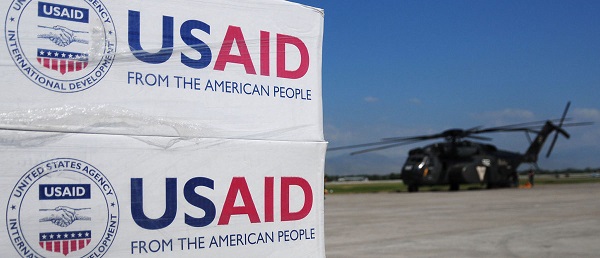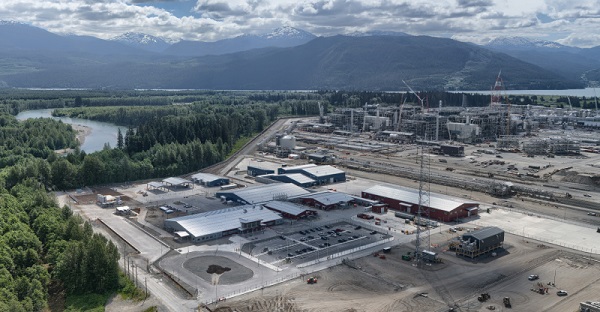Energy
Energy Companies May Be On Cusp Of Uncorking Next Massive Oil, Gas Boon

 From the Daily Caller News Foundation
From the Daily Caller News Foundation
These companies, all run by smart business people, continue to invest many billions of capital dollars in these risky, long-term projects even as “experts” like the bureaucrats at the International Energy Agency (IEA) continue to predict demand for crude oil is about to peak in the next few years.
Constantly advancing technology has always been the driver behind the advance of the oil-and-gas industry since the first successful U.S. well was drilled by Edwin Drake near Titusville, Pennsylvania, in 1859. The Drake well was drilled to a then unheard-of depth of 69 feet using the most primitive equipment imaginable.
This week, 165 years later, U.S. oil giant Chevron announced it had achieved first production in its Anchor field in the Gulf of Mexico. At its shallow depth, underground pressure in the Drake well would have been negligible, just enough to force the oil up out of the ground. The Anchor semi-submersible floating production unit (FPU) that was started up by Chevron this week enables the capture of massive volumes of oil and natural gas from underground formations up to 34,000 feet below sea level at pressures up to 20,000 pounds per square inch.
“The Anchor project represents a breakthrough for the energy industry,” said Nigel Hearne, executive vice president, Chevron Oil, Products & Gas. “Application of this industry-first deepwater technology allows us to unlock previously difficult-to-access resources and will enable similar deepwater high-pressure developments for the industry.”
Chevron says seven deepwater wells will be tied into the Anchor FPU, which has the capacity to capture, process and transport as much as 75,000 barrels of oil and 28 million cubic feet of natural gas every day. The company estimates reserves in the field of 440 million barrels of oil equivalent with current technology. But, again, the technology deployed by the industry advances every day, meaning a far bigger amount of oil and gas will ultimately be recovered over the coming years.
Other major oil companies, like BP, are also beginning to deploy similar high-pressure technology that they and analysts believe will help them tap into billions of new barrels known to exist in deep, high-pressure formations in various parts of the world. Globally, BP says it believes deployment of advanced technology could help it access up to 10 billion barrels of known high pressure reserves.
Reuters quotes Wood Mackenzie principal analyst Mfon Usoro as saying the new high pressure technologies could enable companies like BP and Chevron to unlock as much as 2 billion barrels of known reserves in the Gulf of Mexico alone. “The industry has done their bit to safely deliver the barrels, with the new technology,” she said, adding: “These ultra-high-pressure fields are going to be a big driver for production growth in the Gulf of Mexico.”
On the same day Chevron made its announcement, Chinese national oil company CNOOC announced the completion of what it believes is the largest offshore platform on Earth, the Marjan facility. The giant platform, which serves similar functionality as the Anchor FPO, will now be shipped 6,400 nautical miles to the Persian Gulf, where it will facilitate the full development of Saudi Arabia’s deepwater Marjan Field.
It is important to keep in mind that the mounting of these massive offshore facilities and drilling of the deepwater wells are all long-term, multi-billion-dollar projects. These are facilities designed to handle the production from these deepwater fields for decades, not just a few years until the vaunted energy transition takes away all the demand for the commodities being produced.
In addition to the projects in the Gulf of Mexico and Persian Gulf, all the companies mentioned here are involved in aggressive efforts to discover and produce oil and gas in deepwater regions around the world. CNOOC, for example, is a 20% owner in the prolific Stabroek block development offshore of Guyana operated by ExxonMobil. Chevron stands to become a 30% owner in that same development via its proposed buyout of Houston-based Hess Corp.
These companies, all run by smart business people, continue to invest many billions of capital dollars in these risky, long-term projects even as “experts” like the bureaucrats at the International Energy Agency (IEA) continue to predict demand for crude oil is about to peak in the next few years. Meanwhile, OPEC says it believes demand for crude will keep rising through at least 2045, perhaps longer.
Someone will be right, and someone will be wrong. Regardless, we can rest assured that advancing technology in the industry itself will ensure there will be no shortage of supply.
David Blackmon is an energy writer and consultant based in Texas. He spent 40 years in the oil and gas business, where he specialized in public policy and communications.
Featured image credit: (Screen Capture/PBS NewsHour)
Alberta
Temporary Alberta grid limit unlikely to dampen data centre investment, analyst says
From the Canadian Energy Centre
By Cody Ciona
‘Alberta has never seen this level and volume of load connection requests’
Billions of investment in new data centres is still expected in Alberta despite the province’s electric system operator placing a temporary limit on new large-load grid connections, said Carson Kearl, lead data centre analyst for Enverus Intelligence Research.
Kearl cited NVIDIA CEO Jensen Huang’s estimate from earlier this year that building a one-gigawatt data centre costs between US$60 billion and US$80 billion.
That implies the Alberta Electric System Operator (AESO)’s 1.2 gigawatt temporary limit would still allow for up to C$130 billion of investment.
“It’s got the potential to be extremely impactful to the Alberta power sector and economy,” Kearl said.
Importantly, data centre operators can potentially get around the temporary limit by ‘bringing their own power’ rather than drawing electricity from the existing grid.
In Alberta’s deregulated electricity market – the only one in Canada – large energy consumers like data centres can build the power supply they need by entering project agreements directly with electricity producers.
According to the AESO, there are 30 proposed data centre projects across the province.
The total requested power load for these projects is more than 16 gigawatts, roughly four gigawatts more than Alberta’s demand record in January 2024 during a severe cold snap.
For comparison, Edmonton’s load is around 1.4 gigawatts, the AESO said.
“Alberta has never seen this level and volume of load connection requests,” CEO Aaron Engen said in a statement.
“Because connecting all large loads seeking access would impair grid reliability, we established a limit that preserves system integrity while enabling timely data centre development in Alberta.”
As data centre projects come to the province, so do jobs and other economic benefits.
“You have all of the construction staff associated; electricians, engineers, plumbers, and HVAC people for all the cooling tech that are continuously working on a multi-year time horizon. In the construction phase there’s a lot of spend, and that is just generally good for the ecosystem,” said Kearl.
Investment in local power infrastructure also has long-term job implications for maintenance and upgrades, he said.
“Alberta is a really exciting place when it comes to building data centers,” said Beacon AI CEO Josh Schertzer on a recent ARC Energy Ideas podcast.
“It has really great access to natural gas, it does have some excess grid capacity that can be used in the short term, it’s got a great workforce, and it’s very business-friendly.”
The unaltered reproduction of this content is free of charge with attribution to the Canadian Energy Centre.
Energy
CNN’s Shock Climate Polling Data Reinforces Trump’s Energy Agenda


From the Daily Caller News Foundation
As the Trump administration and Republican-controlled Congress move aggressively to roll back the climate alarm-driven energy policies of the Biden presidency, proponents of climate change theory have ramped up their scare tactics in hopes of shifting public opinion in their favor.
But CNN’s energetic polling analyst, the irrepressible Harry Enten, says those tactics aren’t working. Indeed, Enten points out the climate alarm messaging which has permeated every nook and cranny of American society for at least 25 years now has failed to move the public opinion needle even a smidgen since 2000.
Appearing on the cable channel’s “CNN News Central” program with host John Berman Thursday, Enten cited polling data showing that just 40% of U.S. citizens are “afraid” of climate change. That is the same percentage who gave a similar answer in 2000.
Dear Readers:
As a nonprofit, we are dependent on the generosity of our readers.
Please consider making a small donation of any amount here.
Thank you!
Enten’s own report is an example of this fealty. Saying the findings “kind of boggles the mind,” Enten emphasized the fact that, despite all the media hysteria that takes place in the wake of any weather disaster or wildfire, an even lower percentage of Americans are concerned such events might impact them personally.
“In 2006, it was 38%,” Enten says of the percentage who are even “sometimes worried” about being hit by a natural disaster, and adds, “Look at where we are now in 2025. It’s 32%, 38% to 32%. The number’s actually gone down.”
In terms of all adults who worry that a major disaster might hit their own hometown, Enten notes that just 17% admit to such a concern. Even among Democrats, whose party has been the major proponent of climate alarm theory in the U.S., the percentage is a paltry 27%.
While Enten and Berman both appear to be shocked by these findings, they really aren’t surprising. Enten himself notes that climate concerns have never been a driving issue in electoral politics in his conclusion, when Berman points out, “People might think it’s an issue, but clearly not a driving issue when people go to the polls.”
“That’s exactly right,” Enten says, adding, “They may worry about in the abstract, but when it comes to their own lives, they don’t worry.”
This reality of public opinion is a major reason why President Donald Trump and his key cabinet officials have felt free to mount their aggressive push to end any remaining notion that a government-subsidized ‘energy transition’ from oil, gas, and coal to renewables and electric vehicles is happening in the U.S. It is also a big reason why congressional Republicans included language in the One Big Beautiful Bill Act to phase out subsidies for those alternative energy technologies.
It is key to understand that the administration’s reprioritization of energy and climate policies goes well beyond just rolling back the Biden policies. EPA Administrator Lee Zeldin is working on plans to revoke the 2010 endangerment finding related to greenhouse gases which served as the foundation for most of the Obama climate agenda as well.
If that plan can survive the inevitable court challenges, then Trump’s ambitions will only accelerate. Last year’s elimination of the Chevron Deference by the Supreme Court increases the chances of that happening. Ultimately, by the end of 2028, it will be almost as if the Obama and Biden presidencies never happened.
The reality here is that, with such a low percentage of voters expressing concerns about any of this, Trump and congressional Republicans will pay little or no political price for moving in this direction. Thus, unless the polls change radically, the policy direction will remain the same.
David Blackmon is an energy writer and consultant based in Texas. He spent 40 years in the oil and gas business, where he specialized in public policy and communications.
-

 Fraser Institute1 day ago
Fraser Institute1 day agoBefore Trudeau average annual immigration was 617,800. Under Trudeau number skyrocketted to 1.4 million annually
-

 MAiD1 day ago
MAiD1 day agoCanada’s euthanasia regime is already killing the disabled. It’s about to get worse
-

 Frontier Centre for Public Policy1 day ago
Frontier Centre for Public Policy1 day agoNew Book Warns The Decline In Marriage Comes At A High Cost
-

 Business1 day ago
Business1 day agoPrime minister can make good on campaign promise by reforming Canada Health Act
-

 Addictions1 day ago
Addictions1 day ago‘Over and over until they die’: Drug crisis pushes first responders to the brink
-

 International1 day ago
International1 day agoChicago suburb purchases childhood home of Pope Leo XIV
-

 Daily Caller1 day ago
Daily Caller1 day agoUSAID Quietly Sent Thousands Of Viruses To Chinese Military-Linked Biolab
-

 Energy1 day ago
Energy1 day agoLNG Export Marks Beginning Of Canadian Energy Independence



